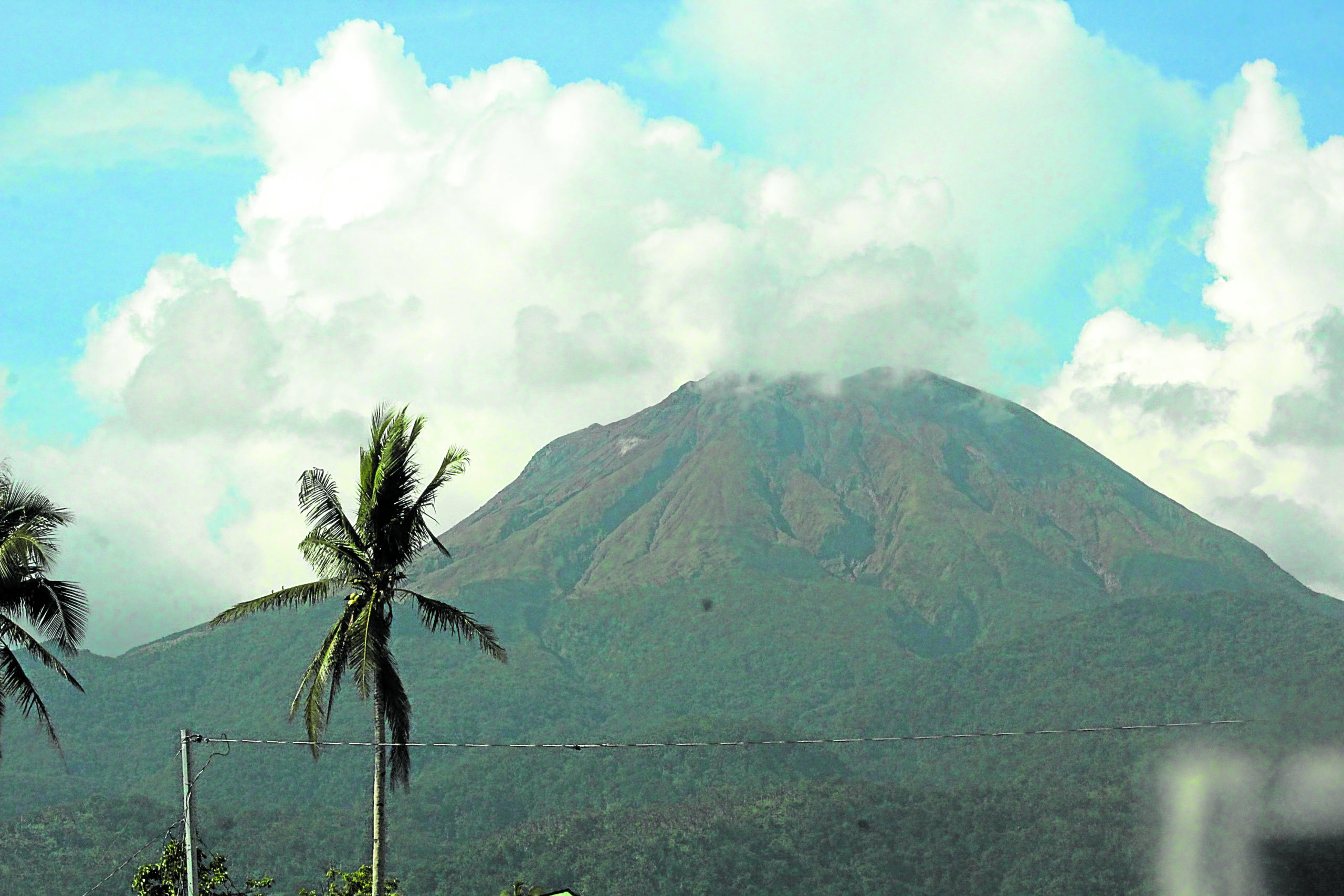
FILE PHOTO: Mt. Bulusan in Sorsogon province showing signs of restiveness, prompting the Philippine Institute of Volcanology and Seismology (Phivolcs) to raise alert level 1 over the volcano on July 6, 2022. – Alert Level 1 stays in Mt. Bulusan as Phivolcs reports on Wednesday, June 29, 2022, increased volcanic activity and 213 quakes since June 24, 2022. —Bureau of Fisheries and Aquatic Resources BICOL
LEGAZPI CITY—Local officials in two towns in Sorsogon province were advised to prepare the evacuation centers in their localities after the Philippine Institute of Volcanology and Seismology (Phivolcs) raised the alert status of Bulusan Volcano on Wednesday.
The evacuation will be necessary as ash fall will engulf the towns of Juban and Irosin as a stream-driven eruption by Mt. Bulusan becomes more likely, said Salvador Mendoza, provincial information officer.
“We will have a cluster meeting [on Thursday] to discuss the readiness of the evacuation centers, but the assets of the provincial government are always ready,” Mendoza said in a phone interview on Wednesday.In a bulletin on Wednesday afternoon, Phivolcs raised alert level 1 (low-level unrest) over Bulusan Volcano following the series of volcanic earthquakes that totaled to 121 since Oct. 14.
At least 37 of these were volcano-tectonic earthquakes that were associated with rock fracturing processes at depths of 1 to 9 kilometers beneath the northwestern and southeastern slopes of the volcano edifice.
Swelling
Based on the ground deformation data, inflammation or swelling at the southern flank has been noted since February and at the northeastern flank since September, while volcanic carbon dioxide concentrations from June to August were also detected.
April Dominguiano, resident volcanologist at the Phivolcs Station in Sorsogon, said these parameters indicate the chances of a phreatic eruption.
“There is hydrothermal activity possibly driven by deep-seated magma degassing that will lead to stream-driven eruptions from any vents,” Dominguiano said in a separate phone interview.
She said the public should avoid entry into the 4-kilometer radius permanent danger zone as an eruption is expected at any time.
With the wind direction going to the southwest sector of the volcano, she said ashfall would likely affect the towns of Irosin and Juban.
Resupply of magma
In Albay province, Phivolcs also monitored a rising number of rockfalls and pyroclastic density current (PDC) in Mayon Volcano on Wednesday following the increase in lava effusion at its crater.
Mayon Volcano and Mt. Bulusan are only 70 kilometers apart.
“Since there is a continuous lava flow, every now and then, the volcanic materials will really fall from the crater,” Paul Karson Alanis, resident volcanologist in Phivolcs Legazpi City, said in a separate phone interview.
Phivolcs Director Teresito Bacolcol said the volcano had a “resupply of magma” from beneath the volcano after the volcanic materials were initially emitted in June and July.
“Possibly there’s a resupply from the magma chamber from beneath, and one reason is that there’s depressurization and the magma is rising,” Bacolcol said in a phone interview on Wednesday.
Phivolcs said on its website on Wednesday that “alert level 3 is maintained over Mayon Volcano, which means that it is currently in a relatively high level of unrest, and a hazardous eruption within weeks or even days could still be possible.”